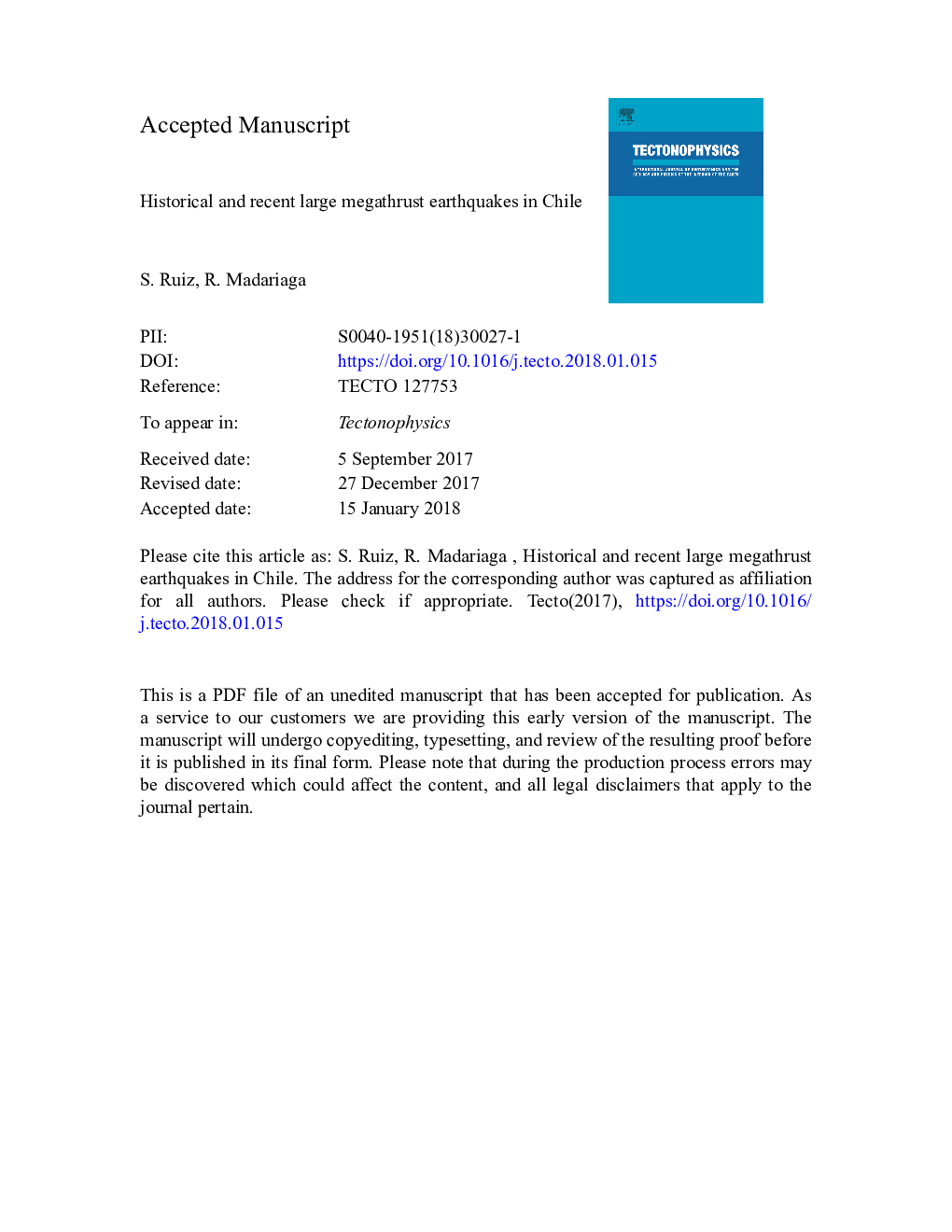| Article ID | Journal | Published Year | Pages | File Type |
|---|---|---|---|---|
| 8908687 | Tectonophysics | 2018 | 71 Pages |
Abstract
Recent earthquakes in Chile, 2014, Mw 8.2 Iquique, 2015, Mw 8.3 Illapel and 2016, Mw 7.6 Chiloé have put in evidence some problems with the straightforward application of ideas about seismic gaps, earthquake periodicity and the general forecast of large megathrust earthquakes. In northern Chile, before the 2014 Iquique earthquake 4 large earthquakes were reported in written chronicles, 1877, 1786, 1615 and 1543; in North-Central Chile, before the 2015 Illapel event, 3 large earthquakes 1943, 1880, 1730 were reported; and the 2016 Chiloé earthquake occurred in the southern zone of the 1960 Valdivia megathrust rupture, where other large earthquakes occurred in 1575, 1737 and 1837. The periodicity of these events has been proposed as a good long-term forecasting. However, the seismological aspects of historical Chilean earthquakes were inferred mainly from old chronicles written before subduction in Chile was discovered. Here we use the original description of earthquakes to re-analyze the historical archives. Our interpretation shows that a-priori ideas, like seismic gaps and characteristic earthquakes, influenced the estimation of magnitude, location and rupture area of the older Chilean events. On the other hand, the advance in the characterization of the rheological aspects that controlled the contact between Nazca and South-American plate and the study of tsunami effects provide better estimations of the location of historical earthquakes along the seismogenic plate interface. Our re-interpretation of historical earthquakes shows a large diversity of earthquakes types; there is a major difference between giant earthquakes that break the entire plate interface and those of Mw ~ 8.0 that only break a portion of it.
Keywords
Related Topics
Physical Sciences and Engineering
Earth and Planetary Sciences
Earth-Surface Processes
Authors
Ruiz S., Madariaga R.,
